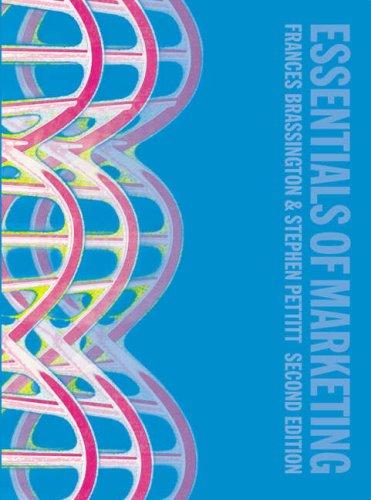4 If you were the marketing director of SMA, what uses could you put the research findings...
Question:
4 If you were the marketing director of SMA, what uses could you put the research findings to, bearing in mind the constraints in this sector? It can be difficult to achieve brand distinction and relevance when you have a full range of product, place, price and promotion choices that you can make.
Imagine how much more difficult it can be when there are restrictions placed on how you present your product and communicate its benefits. Particularly when the target audience is generally eager for, and receptive to, information about your product category. This is the position that those who are responsible for marketing formula milk for babies find themselves in.
It is an extraordinary market for a number of reasons.
At the heart of it is the fact that current government health policy is that breastfeeding should be promoted and encouraged, and thus formula milk manufacturers are not permitted to engage in consumer advertising or promotion in mass media to pregnant women or new mums, nor is the depiction of babies allowed on their packaging. Furthermore, formula milk manufacturers may provide information to mums only through direct request, or via support material they issue to healthcare professionals (midwives and health visitors). This means that marketing communication opportunities are limited and thus it is a product category that people give no thought to until they are on the point of using it – because of the ‘breast is best’ policy and the resulting high levels of intention to breastfeed, even during pregnancy formula milk is rarely considered.
Nevertheless, despite high intentions to breastfeed, for a number of reasons, 31 per cent of the 690,000 women having babies in the UK each year bottle-feed from birth and 54 per cent introduce bottle feeding within the first year of their child’s life. As milk represents a baby’s only form of sustenance for the first four months and a key form of sustenance for the rest of the first year of life, the decision about which brand to choose is a highly emotive one for the mother, and yet one to which she may have given little previous thought, and about which she is likely to have little information.
Once in the market, bottle-feeding mums will tend to remain brand loyal because of the risk of upsetting their child’s digestive system through chopping and changing.
That’s good news for the manufacturers, but they also have to take account of the fact that purchasers are only in the market for an average of 12 months before moving their child onto cow’s milk, so the target audience is always changing.
Step by Step Answer:

Essentials Of Marketing
ISBN: 9780273708186
2nd Edition
Authors: Frances Brassington, Pettitt, Stephen





